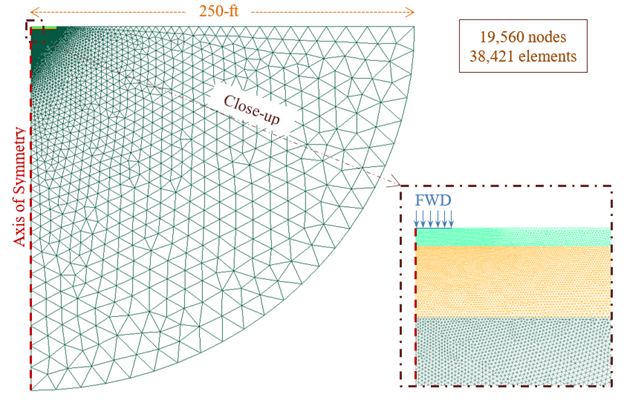BAKFAA Dynamic Backcalculation
The Falling Weight Deflectometer (FWD) is the most common non-destructive pavement evaluation device. It applies an impulse load of short duration – simulating a moving wheel load – and measures the corresponding pavement surface deflections. The pavement variables are then determined through a process called backcalculation, where that process uses a forward model to calculate the deflections and an optimization model to iteratively improve the variables. The reliable backcalculation of the layer variables using FWD data is critical for the structural evaluation of pavements.
The FAA is currently using linear elastic theory (LET) based on static analysis in its BAKFAA software for the backcalculation of layer moduli for flexible and rigid pavements. The static analysis poses several limitations in the backcalculation process, especially for rigid or thick and stiff flexible pavement structures that are common for airports.
The FAA developed a standalone finite element (FE) module based on dynamic analysis and is currently evaluating different optimization techniques for the upgrade of the BAKFAA software. The FE module has static and dynamic modeling capabilities with linear elastic and viscoelastic isotropic materials. It produces identical results to a well-known FE commercial software in 1 to 3% of the time, making it very effective and efficient for dynamic backcalculation. The optimization techniques incorporate classical and modern methods, including deep reinforcement learning – a technique used in the artificial intelligence’s machine learning.

Sample Mesh of Pavement Structure under FWD Loading (Click to Zoom)
For more information on the device and software mentioned on this page, follow the links to the detailed FAA webpages.
HWD
BAKFAA
Return to Showcase Research Projects Overview